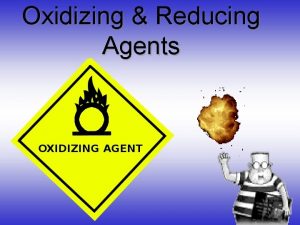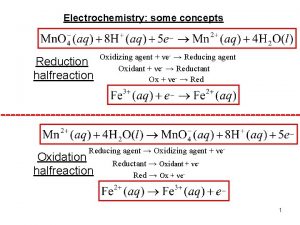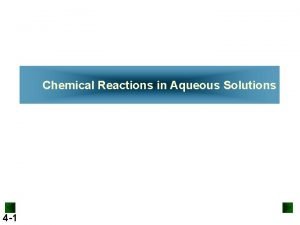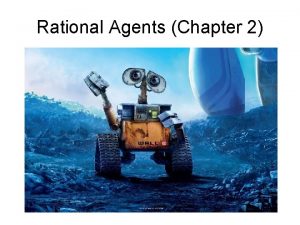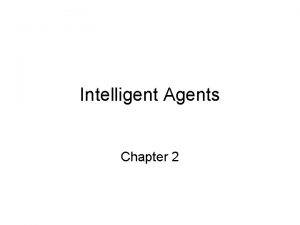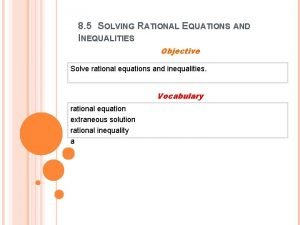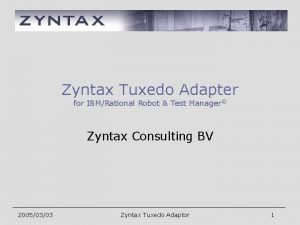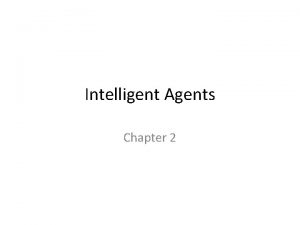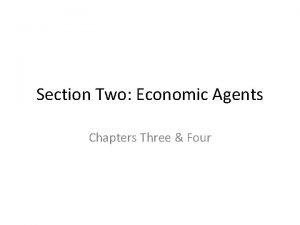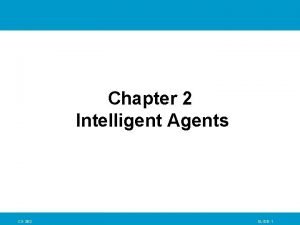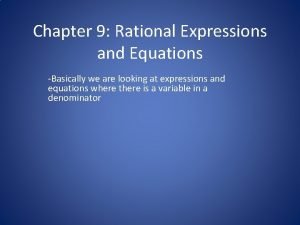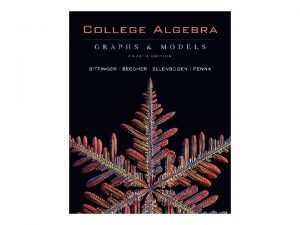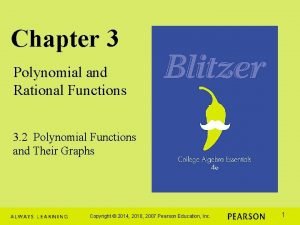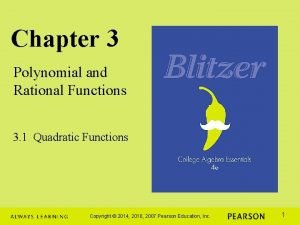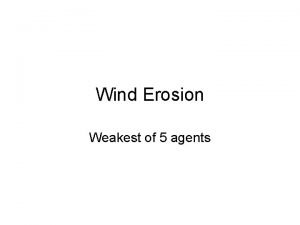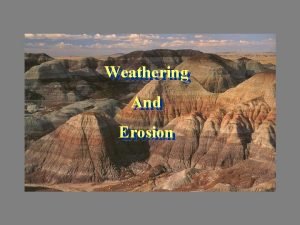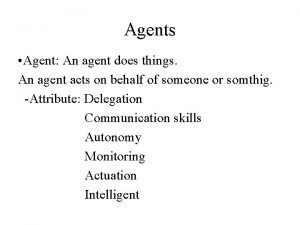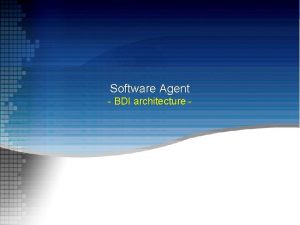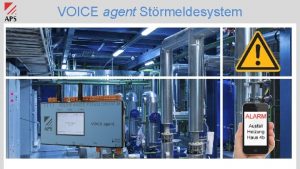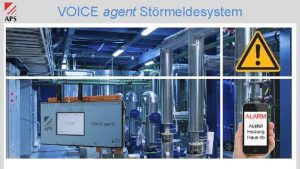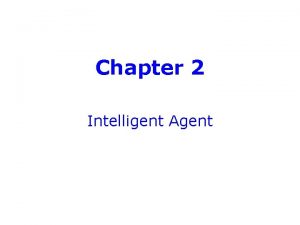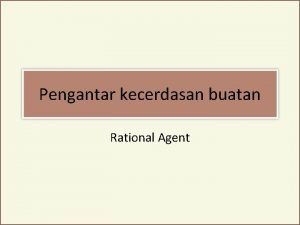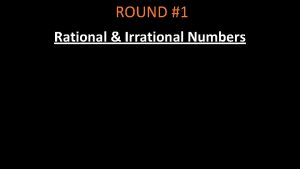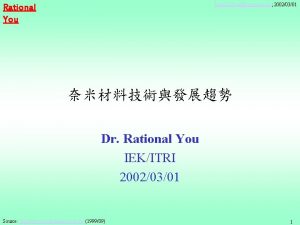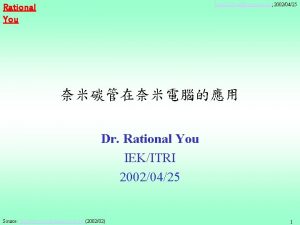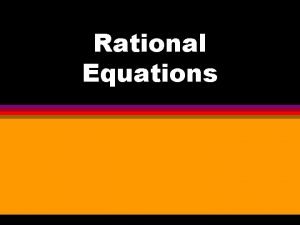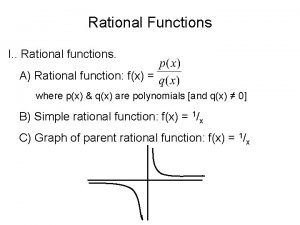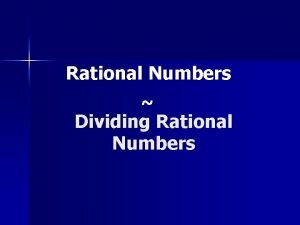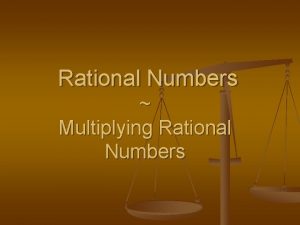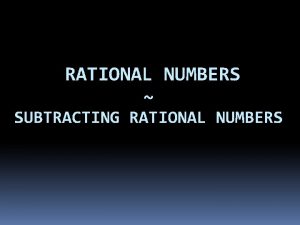Rational Agents Chapter 2 Agents An agent is


![Example: Vacuum-Agent • Percepts: Location and status, e. g. , [A, Dirty] • Actions: Example: Vacuum-Agent • Percepts: Location and status, e. g. , [A, Dirty] • Actions:](https://slidetodoc.com/presentation_image/013e947b340960a98c3b14cda56c2c35/image-3.jpg)

![Back to Vacuum-Agent • Percepts: Location and status, e. g. , [A, Dirty] • Back to Vacuum-Agent • Percepts: Location and status, e. g. , [A, Dirty] •](https://slidetodoc.com/presentation_image/013e947b340960a98c3b14cda56c2c35/image-5.jpg)
















- Slides: 21

Rational Agents (Chapter 2)

Agents • An agent is anything that can be viewed as perceiving its environment through sensors and acting upon that environment through actuators
![Example VacuumAgent Percepts Location and status e g A Dirty Actions Example: Vacuum-Agent • Percepts: Location and status, e. g. , [A, Dirty] • Actions:](https://slidetodoc.com/presentation_image/013e947b340960a98c3b14cda56c2c35/image-3.jpg)
Example: Vacuum-Agent • Percepts: Location and status, e. g. , [A, Dirty] • Actions: Left, Right, Suck, No. Op function Vacuum-Agent([location, status]) returns an action • if status = Dirty then return Suck • else if location = A then return Right • else if location = B then return Left

Rational agents • For each possible percept sequence, a rational agent should select an action that is expected to maximize its performance measure, given the evidence provided by the percept sequence and the agent’s built-in knowledge • Performance measure (utility function): An objective criterion for success of an agent's behavior • Expected utility: • Can a rational agent make mistakes?
![Back to VacuumAgent Percepts Location and status e g A Dirty Back to Vacuum-Agent • Percepts: Location and status, e. g. , [A, Dirty] •](https://slidetodoc.com/presentation_image/013e947b340960a98c3b14cda56c2c35/image-5.jpg)
Back to Vacuum-Agent • Percepts: Location and status, e. g. , [A, Dirty] • Actions: Left, Right, Suck, No. Op function Vacuum-Agent([location, status]) returns an action • if status = Dirty then return Suck • else if location = A then return Right • else if location = B then return Left • Is this agent rational? – Depends on performance measure, environment properties

Specifying the task environment • PEAS: Performance measure, Environment, Actuators, Sensors • P: a function the agent is maximizing (or minimizing) – Assumed given – In practice, needs to be computed somewhere • E: a formal representation for world states – For concreteness, a tuple (var 1=val 1, var 2=val 2, … , varn=valn) • A: actions that change the state according to a transition model – Given a state and action, what is the successor state (or distribution over successor states)? • S: observations that allow the agent to infer the world state – Often come in very different form than the state itself – E. g. , in tracking, observations may be pixels and state variables 3 D coordinates

PEAS Example: Autonomous taxi • Performance measure – Safe, fast, legal, comfortable trip, maximize profits • Environment – Roads, other traffic, pedestrians, customers • Actuators – Steering wheel, accelerator, brake, signal, horn • Sensors – Cameras, LIDAR, speedometer, GPS, odometer, engine sensors, keyboard

Another PEAS example: Spam filter • Performance measure – Minimizing false positives, false negatives • Environment – A user’s email account, email server • Actuators – Mark as spam, delete, etc. • Sensors – Incoming messages, other information about user’s account

Environment types • • Fully observable vs. partially observable Deterministic vs. stochastic Episodic vs. sequential Static vs. dynamic Discrete vs. continuous Single agent vs. multi-agent Known vs. unknown

Fully observable vs. partially observable • Do the agent's sensors give it access to the complete state of the environment? – For any given world state, are the values of all the variables known to the agent? vs. Source: L. Zettlemoyer

Deterministic vs. stochastic • Is the next state of the environment completely determined by the current state and the agent’s action? – Is the transition model deterministic (unique successor state given current state and action) or stochastic (distribution over successor states given current state and action)? – Strategic: the environment is deterministic except for the actions of other agents vs.

Episodic vs. sequential • Is the agent’s experience divided into unconnected single decisions/actions, or is it a coherent sequence of observations and actions in which the world evolves according to the transition model? vs.

Static vs. dynamic • Is the world changing while the agent is thinking? • Semidynamic: the environment does not change with the passage of time, but the agent's performance score does vs.

Discrete vs. continuous • Does the environment provide a fixed number of distinct percepts, actions, and environment states? – Are the values of the state variables discrete or continuous? – Time can also evolve in a discrete or continuous fashion vs.

Single-agent vs. multiagent • Is an agent operating by itself in the environment? vs.

Known vs. unknown • Are the rules of the environment (transition model and rewards associated with states) known to the agent? – Strictly speaking, not a property of the environment, but of the agent’s state of knowledge vs.

Examples of different environments Word jumble solver Chess with a clock Scrabble Autonomous driving Observable Fully Partially Deterministic Strategic Stochastic Episodic Sequential Static Semidynamic Static Dynamic Discrete Continuous Single agent Single Multi

Preview of the course • Deterministic environments: search, constraint satisfaction, classical planning – Can be sequential or episodic • Multi-agent, strategic environments: minimax search, games – Can also be stochastic, partially observable • Stochastic environments – Episodic: Bayesian networks, pattern classifiers – Sequential, known: Markov decision processes – Sequential, unknown: reinforcement learning

Review: PEAS

Review: PEAS • P: Performance measure – Function the agent is maximizing (or minimizing) • E: Environment – A formal representation for world states – For concreteness, a tuple (var 1=val 1, var 2=val 2, … , varn=valn) • A: Actions – Transition model: Given a state and action, what is the successor state (or distribution over successor states)? • S: Sensors – Observations that allow the agent to infer the world state – Often come in very different form than the state itself

Review: Environment types • • Fully observable vs. partially observable Deterministic vs. stochastic (vs. strategic) Episodic vs. sequential Static vs. dynamic (vs. semidynamic) Discrete vs. continuous Single agent vs. multi-agent Known vs. unknown
 Reducing agent
Reducing agent Table of standard electrode potential
Table of standard electrode potential Reducing agent vs oxidizing agent
Reducing agent vs oxidizing agent Agent function vs agent program
Agent function vs agent program Peas description for part-picking robot
Peas description for part-picking robot Rational agent example
Rational agent example Model-based reflex agent examples
Model-based reflex agent examples 8-5 solving rational equations and inequalities
8-5 solving rational equations and inequalities Zyntax
Zyntax Agent a chapter 2
Agent a chapter 2 Technosis definition
Technosis definition Agent a chapter 3
Agent a chapter 3 Deterministic vs stochastic environment examples
Deterministic vs stochastic environment examples Agent a chapter 2
Agent a chapter 2 Chapter 9 rational expressions and equations answers
Chapter 9 rational expressions and equations answers Chapter 4 polynomial and rational functions
Chapter 4 polynomial and rational functions Chapter 3 polynomial and rational functions
Chapter 3 polynomial and rational functions Chapter 3 polynomial and rational functions
Chapter 3 polynomial and rational functions 5 agents of erosion
5 agents of erosion Pt international four tastes
Pt international four tastes Networked insurance
Networked insurance Difference between erosion and deposition
Difference between erosion and deposition
